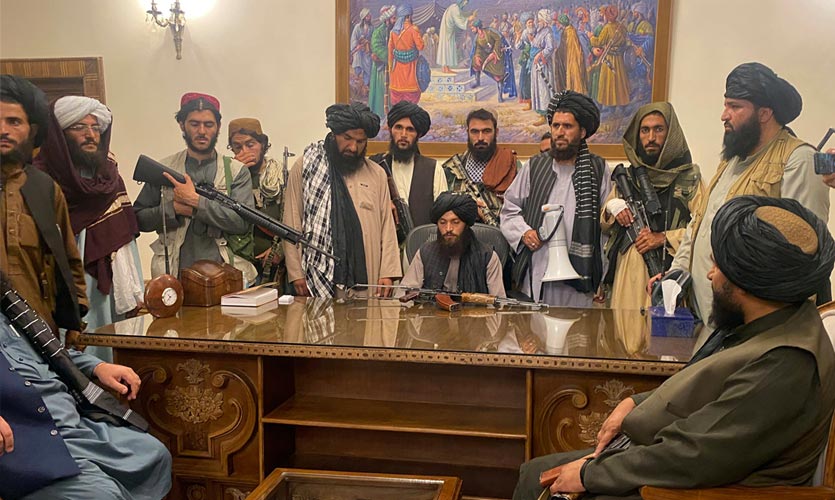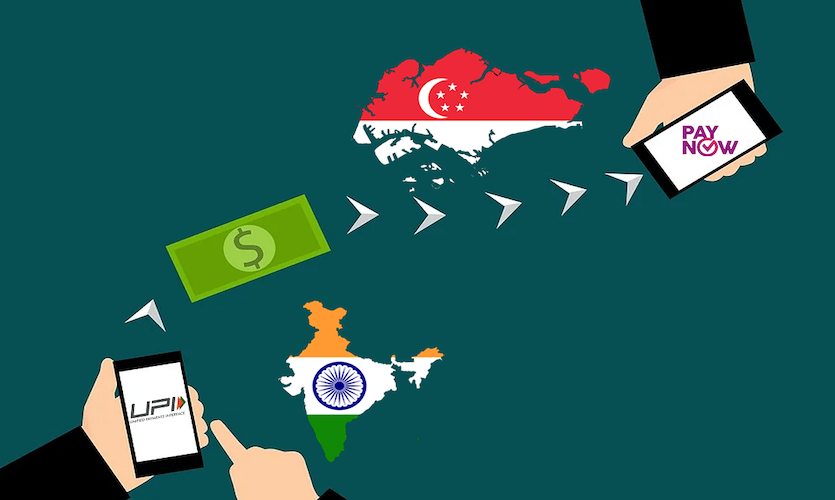Twenty years after being kicked out of power by the United States’ forces, the Taliban have managed to seize control of Afghanistan once again. Experts believe that the Taliban leadership have adopted a pragmatic approach to public relations, however, it is hard to predict exactly what Afghanistan’s future might look like under Taliban rule. The disturbing footage of Afghanis climbing onto a US military plane in an attempt to escape, and their eventual fall to death, has left the world anxiously in anticipation of a breeding ground for terrorism, under the Deobandi Islamist movement.
Post the Soviet occupation and Afghan mujahideen infighting, the Taliban were at its peak popularity. By 1998, they were in control of almost 90 percent of Afghanistan and were welcomed due to their success in curbing corruption, lawlessness, and bringing the roads and various areas under their control safely that promoted commerce in the region. However, under their reign, various cases of human rights and cultural abuses arose. The Taliban has been held responsible for public executions and amputations, banning women’s education, television and media, and giving sanctuary to al-Qaeda and its leader, Osama bin Laden, who planned the 9/11 attacks.
History paints a dystopian picture of Afghanistan under Taliban rule and despite efforts of consolation from the insurgent group in an attempt to remake their image, worries loom large among most countries. The list of nations also comprises those that have had long standing trade ties with the now war-torn country, including India.
India’s Development Investments
According to the Ministry of External Affairs, India has heavily invested in over 400 projects across the 34 provinces in Afghanistan, the fates of which are now uncertain. The Indian government’s investments are close to over $3 billion in development assistance.
India has helped Afghanistan rebuild its infrastructure – institutions, dams, electricity transmission lines and substations, schools and hospitals – and also provided duty-free access to the Indian market under the 2011 India-Afghanistan Strategic Partnership Agreement that re-committed Indian assistance to encourage investment in Afghanistan.
The projects include India’s high-visibility investment – the 42MW Salma Dam in Herat province. The hydropower and irrigation project’s surrounding area has been facing increased attacks, and the Taliban have claimed the area around the dam to be under their control. The 218 kms long Zaranj-Delaram highway was built by the Border Roads Organisation, which is of strategic importance to India. The highway provides an alternative route into Afghanistan through Iran’s Chabahar port, due to Pakistan’s opposition to India’s overland access for trade with Afghanistan.
The Afghan parliament building was built by India at the cost of $90 million, and was inaugurated by Prime Minister Narendra Modi in 2015. India also followed through on the Tripartite agreement for the restoration of Stor palace, and the establishment of a 220 kV DC transmission line from Pul-e-Khumri to the north of Kabul. Indian contractors have restored the country’s health and telecommunication infrastructures in many provinces. India has gifted Afghanistan 400 buses and 200 minibuses for urban transportation, as well as 105 utility vehicles for municipalities and 285 military vehicles for the Afghan National Army.
At the Geneva Conference in November 2020, the external affairs minister, S. Jaishankar announced that India was in agreement with Afghanistan’s plans to construct the Shahtoot Dam in Kabul district, which would provide safe drinking water to 2 million residents. He had also announced the commencement of about a 100 community development projects worth $80 million.
Impact On Bilateral Trade
The trade between the two nations was estimated to be over $1.5 billion, as of 2019-2020. India is one of Afghanistan’s biggest export markets, especially for goods such as dried fruits, carpets, and wool, among other things. The total value of all Afghan exports to India was $410 million in 2019, which increased to $500 million during 2020-21.
The Federation of Indian Export Organisation (FIEO) told Reuters’ partner ANI on August 19 that the Taliban have stopped all imports and exports from India through the transit routes of Pakistan.
India imports dried raisins, walnuts, almonds, figs, pine nuts, pistachios, dried apricots, fresh fruits such as pomegranates, apples, apricots, cherries, melons, watermelons, herbs (asafoetida) and saffron from the South Asian country. The recent developments have gotten Indian businesses worried. With the temporary closure of borders, local traders expect supply shortages to drive up prices of dry fruits. “Prices in the markets may go up due to uncertainty of the political situation in Afghanistan… Currently, the imports [and] exports shipments are stranded which may cause heavy losses to the traders,” trade body Confederation of All India Traders (CAIT) said in a statement.
“It is a landlocked country and the air route is the main medium of exports and that has been disrupted. Trade will resume only after the uncertainty eases. Private players will have to deal through third countries to export to Afghanistan, but it all depends on how the situation evolves,” the traders’ consortium said.
However, according to Rahil Shaikh, managing director of the Mumbai-based MEIR Commodities that exports sugar to Afghanistan, the disruption is expected to be just a temporary glitch in the trade due to the transition in power and trade is expected to restart.
Taliban spokesperson Zabihullah Mujahid denied the FIEO’s claims to Reuters in a tweet saying, “The Islamic Emirate wants better diplomatic and trade relations with all countries.”
Read more: Taliban Announces Its Victory In Afghanistan Following Ashraf Ghani’s Resignation
India’s Way Forward
The Taliban has expressed deep appreciation for India’s humanitarian efforts in Afghanistan, but has warned India against getting involved militarily. “What do you mean by military role? If they come to Afghanistan militarily and have their presence. I think that will not be good for them, they have seen the fate of military presence in Afghanistan of other countries,” Qatar-based spokesperson of the Taliban, Suhail Shaheen told ANI on August 14. Shaheen further added, “And about their help to the Afghan people or national projects, I think that is something which is appreciated.”
The future of trade and investment depends on the role India decides to play on the diplomatic front. With the ever looming fear of potential Kashmiri militancy and other destabilising agents that can affect trade and investment directly or indirectly, India needs to be on guard.
Taliban’s spokesperson Shaheen, in early July, had established that China was a “welcome friend”, and assured the safety of Chinese investors and workers in Afghanistan. In an article in the Diplomat, Editor-in-Chief of Freedom Gazette and author of ‘Flying Blind: India’s Quest for Global Leadership’, Mohamed Zeeshan says, “New Delhi must make sure that it is not left out of this loop. India should seek to establish a dialogue with China on Afghanistan, identify and establish common interests, and cooperate over outreach to different factions within the Taliban.”
Zeeshan further explained, “When the US flew into Afghanistan two decades ago, India found itself upstaged by Pakistan in dictating American foreign policy moves in the country.” He reiterated, “New Delhi has a more credible presence in Afghanistan today than it did in 2001, but it needs to make sure that it does not find itself playing catch-up once again.”
There are many routes for India to take, depending on its priority. With China taking a strategic U-turn by embracing the Taliban’s return to rule, India needs to act soon instead of taking a “wait and watch” approach, if it wishes to book a seat at the table of global discussions around Afghanistan related issues.
“I am pretty sure over a period of time Afghanistan will also realise that economic development is the only way to move forward and they will continue with that kind of trade,” Dr Ajay Sahai, Director General (DG) of the FIEO told ANI. He added, “I think the new regime will like to have political legitimacy and for that India’s role will become important for them also.” Consequently, India may stand a chance to leverage its crucial trade partnership as the Taliban tries to gain international standing.









